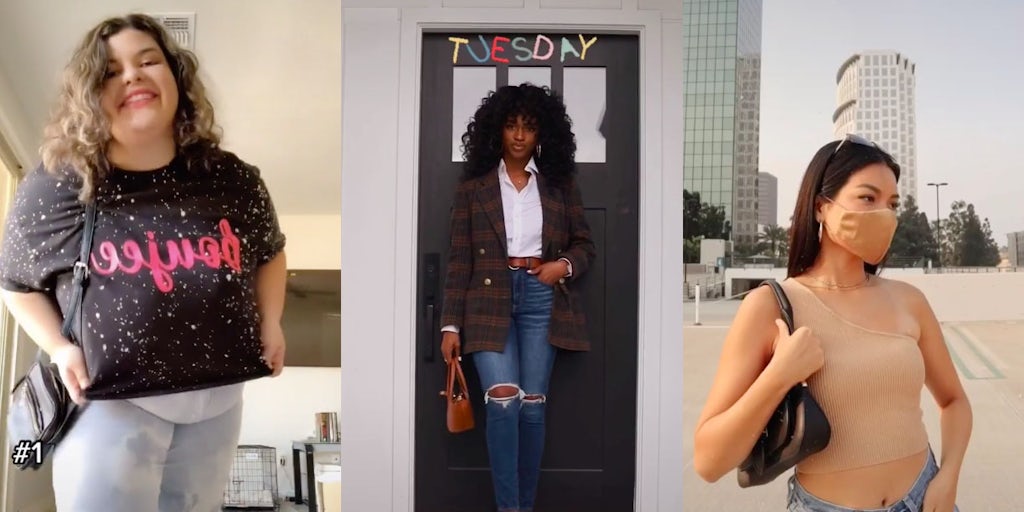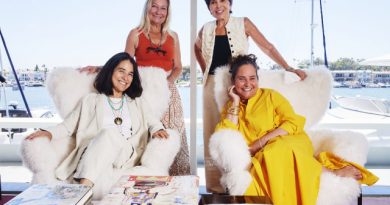How to Work With TikTok Talent | Intelligence, BoF Professional
LOS ANGELES, United States — Kiitan Akinniranye, a Los Angeles-based Nigerian influencer, has promoted products like Tresemme hair products and Truly hard seltzer to her 832,000 Instagram followers. But when she started posting on TikTok in February, she took her time before wading into #sponcon territory.
The point in waiting, she said, was to better develop an understanding of what her TikTok followers were interested in viewing (mostly her styling outfits, with plenty of jump-cut transitions).
That was then. Akinniranye inked a deal with Ralph Lauren in October to promote virtual clothes for cartoon-like avatars known as Bitmoji. By that point, she had nearly 350,000 TikTok followers. Akinniranye featured four outfits the brand sent her, including a motocross-style jacket and a crisp white button-down, with her Bitmoji alongside her wearing the same thing. In three weeks, the video earned more than 28,000 views, on par with her other content.
For its campaign, Ralph Lauren deliberately targeted influencers like Akinniranye with mid-sized followings and a reputation for creative independence. The strategy worked: TikTok videos featuring the hashtag #RLBitmoji attracted over 6.2 million views.
Fashion brands have struggled with how to use TikTok, even as the platform has grown into a juggernaut rivalling Snapchat and Instagram for young consumers’ attention. Successful campaigns tend to cast a wide net and allow creators to do what they want with a hashtag or a product. That can be difficult to accept for brands used to stage-managing every aspect of their marketing.
But the sooner brands let go of the playbook that works on other platforms and adopt TikTok best practices, the better off they’ll be, experts say.
“It’s all about … trusting [influencers’] process,” said Alessandro Bogliari, co-founder and chief executive of the firm The Influencer Marketing Factory. “They are the ones that know their audience, more than the brands themselves.”
Data only goes so far
Here’s how the influencer marketing formula works on Instagram and YouTube: brands looking for an immediate sales boost seek out nano-influencers (generally, those with fewer than 10,000 followers) whose fans are generally more likely to listen to their pitches. Bigger influencers are preferred for raising awareness about a brand – think Fendi tapping Brittany Xavier and her 1.6 million Instagram followers to promote the latest Baguette.
Trying to find the rising talent early and building a relationship by creating a contract with them, this is a little bit like the NBA draft of influencer marketing
TikTok — with its algorithm that can make a video go viral whether it’s made by someone with 15 followers or 15 million — flips the script. It’s not so easy to figure out which creator with a micro following is going to get mega views.
“Trying to find the rising talent early and building a relationship by creating a contract with them, this is a little bit like the NBA draft of influencer marketing,” said Pierre-Loïc Assayag, chief executive of influencer marketing firm Traackr.
Many brands play the field, offering free products and creative briefs to a few dozen influencers who still operate under the radar. If one or two produce content that performs, they might graduate into a longer-term partnership, said Mae Karwowski, founder of influencer marketing firm Obviously.
While there are some total unknowns who suddenly go viral, in general, mid-tier creators are the most effective at driving engagement. Brands should examine the average engagement and views of the creator’s most recent posts, and ask them how many times they were featured on “For You” pages (these videos are served up to users and therefore have a better chance of going viral), Bogliari said.
Creative freedom and “hand-holding”
TikTok’s unpredictable algorithm also makes it harder to set prices for an influencer campaign. An influencer with 100,000 followers on Instagram might have had an agent for years; a TikTok creator might have accumulated the same following with a couple of viral videos the week before. Their videos could perform just as well for a brand, but fresh TikTok talent may have no idea how to produce paid content, Karwowski said.
Although the creative discretion should be left in large part to the influencer, many of the platform’s creators are young and may need parental sign-off and to be walked through their contracts.
“There’s definitely more hand-holding with the top creators,” Karwowski said. I think that’s kind of surprising to a lot of brands because the younger people are so savvy online, but it’s still [their] first time working with big brands.”
Many steadfast principles that define influencer marketing still apply. A creator’s audience should overlap with a brand’s, or at least the type of consumer the brand is targeting. Strong engagement matters, as does sharing a brand’s values.
“Hype” houses — where a handful of content creators live together and star in each other’s videos – were the path to high engagement for some influencers earlier this year. But brands should do their research before getting involved with one, Bogliari said. Stories abound about house managers who mistreated TikTokers and withheld money from them, or about parties that flouted pandemic safety rules.
“If you are a fashion brand with … a reputation and strong brand values, would you really want to associate yourself with a bunch of kids that you know might ruin your name?” Bogliari said.
The best campaigns might involve influencers — but are often focused on encouraging regular users to participate in a challenge or meme, creating a domino effect.
Hollister created an original song called “More Happy” to promote a contest where the winning participant could meet Dixie and Charli D’Amelio, two of TikTok’s breakout stars. The song has been used more than 77,000 times, according to Traackr.
In August, fast-fashion retailer Asos launched a three-week campaign on TikTok, the #AySauce challenge, which included 25 American and British content creators with a combined following of more than 219 million. The challenge encouraged users to post three different outfits using an original audio track. The hashtag has received more than two billion views.
Asos followed #AySauce up with a Halloween campaign, commissioning the artist Cashino to produce an original song that uses the brand’s name throughout, and tapping beauty creators to display their Halloween costumes and makeup.
Luxury brands have been slower to embrace TikTok, though plenty of labels have found themselves going viral on the platform anyway. Micro-influencer Lynnette Hernandez started a trend using a “Louis Vuitton Lovers” sound bite, encouraging others to share their own LV bags. Eventually, beauty influencer Bretman Rock — who has 7 million followers on TikTok and more than double that on Instagram — participated in the trend.
Brands would struggle to recreate this sort of viral magic on their own.
“The biggest mistake you can do is to go on TikTok, get a bunch of influencers, paying them to do what you think is going to work,” Bogliari said. “[You’re] trying to be young but it’s actually more like, ‘okay, Boomer.”
Related Articles:
How Influencers Are Protecting Themselves Against Misbehaving Brands


